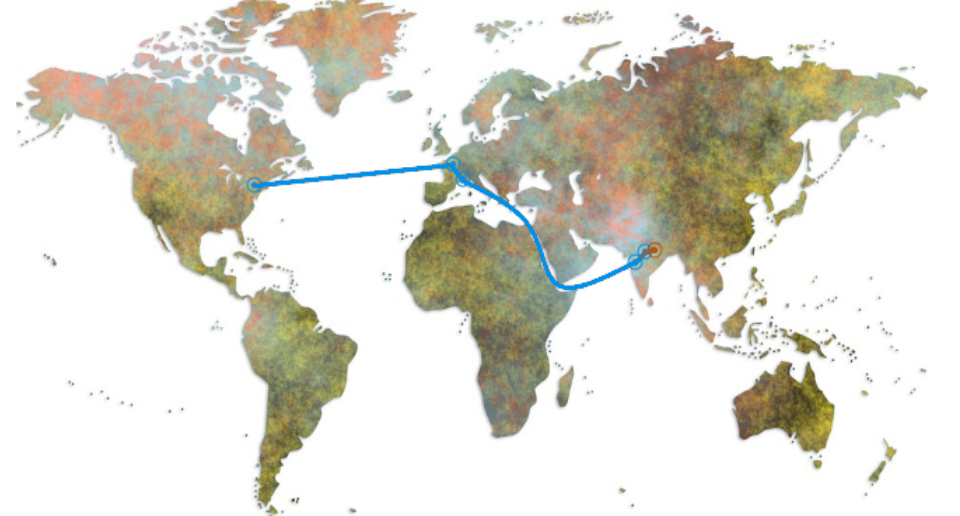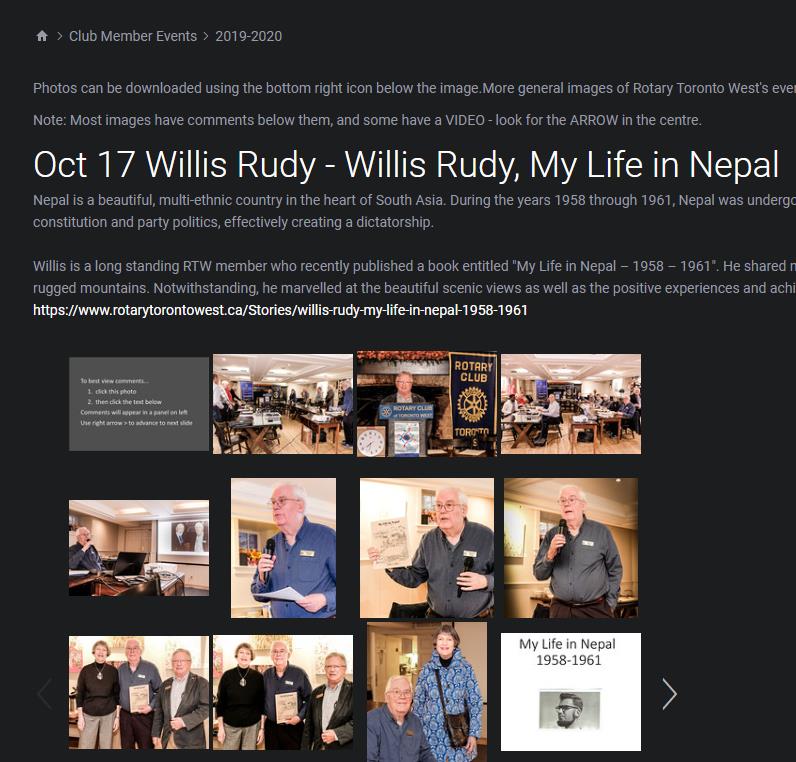
Three Years in Nepal Changed His Life
At 22, Willis Rudy felt adrift: his career in music seemed at a dead-end, he was struggling financially and wasn't sure what to do next. So, of course, he went to Nepal. Willis shared some of the highlights of his new book, My Life in Nepal, 1958 - 1961 with us.

Like so many facing this right of passage, Willis found himself confused about his life's direction as a young adult. The passion for music that had guided him to this point was still there, but the prospects for a rewarding career in music seemed slight. With no Plan B to fall back on, Willis chose the path of service, perhaps foreshadowing his future connection to Rotary.
For 22 year-old Willis, service came in the form of a mission sponsored by the Mennonite Central Committee. When offered the chance to participate in a mission to the Far East, he quickly accepted and soon found himself beginning the month-long journey to Kathmandu.
In the late 1950s, direct travel to Nepal was not easily accomplished. Willis' journey began at Hoboken, New Jersey, with the first leg of the trip bringing him to Paris and Marseilles, France. He traversed the Meditteranean Sea and Indian Ocean by ship, via the famous Suez Canal, landing eventually in Mumbai (Bombay), India. Travel by train commenced from Mumbai to New Delhi then Raxaul, a Nepalese town on the north border of India. The final leg of the trip was by plane, from Raxaul to Kathmandu.

When Willis left the United States, he did not know what he would be doing when he arrived in Nepal, only that he was there to "help". He subsequently learned that he would be working in a newly established hospital, assisting American Drs. Elisabeth and Edgar R. Miller. Willis was soon occupied with transcribing Dictaphone medical reports. With only a Grade 10 typing class to fall back on, he felt less than prepared for his new role but soon adjusted. Because Willis' Canadian citizenship allowed him to travel to India without a visa, he also took on the role of the procurer of supplies for the hospital. The large oxygen tanks could not be transported by air so overland was the only option, by way of the solitary single lane road to Nepal.
As time went on, Willis was asked to assist Dr. Carl Friedricks, then the Director of the Tansen Hospital, with a regional survey for project needs. Like the Millers, Dr. Carl and wife Betty had been serving as medical missionaries in Nepal and other parts of South Asia for many years. Willis' work with Dr. Friedricks and his family involved trekking through the Doti District of Nepal, a remote area that is still notorious for its challenging terrain.

Image of the Tansen Hospital under construction, source: https://firstbangor.org/carl-and-betty/
Half a century later, Willis looks back on his time in Nepal as character-building. Nepal was the birthplace of his career in hospital management. It was also the place where his concepts of service where molded, where he came to understand that literacy is the primary driver of economic development. In this regard, Willis states,
It is the foundation for improved commerce, better farming methods and food security. It is the foundation for understanding the determinants of good health, clean water, sanitation, nutrition, along with prevention strategies such as vaccinations, and improved maternal health and child wellness.
So much wisdom from three short years in Nepal.
___________________________________________________________
Willis Rudy's full presentation, with 45 travel photos, that was given to our club members on October 17 2019 may be viewed by clicking here

